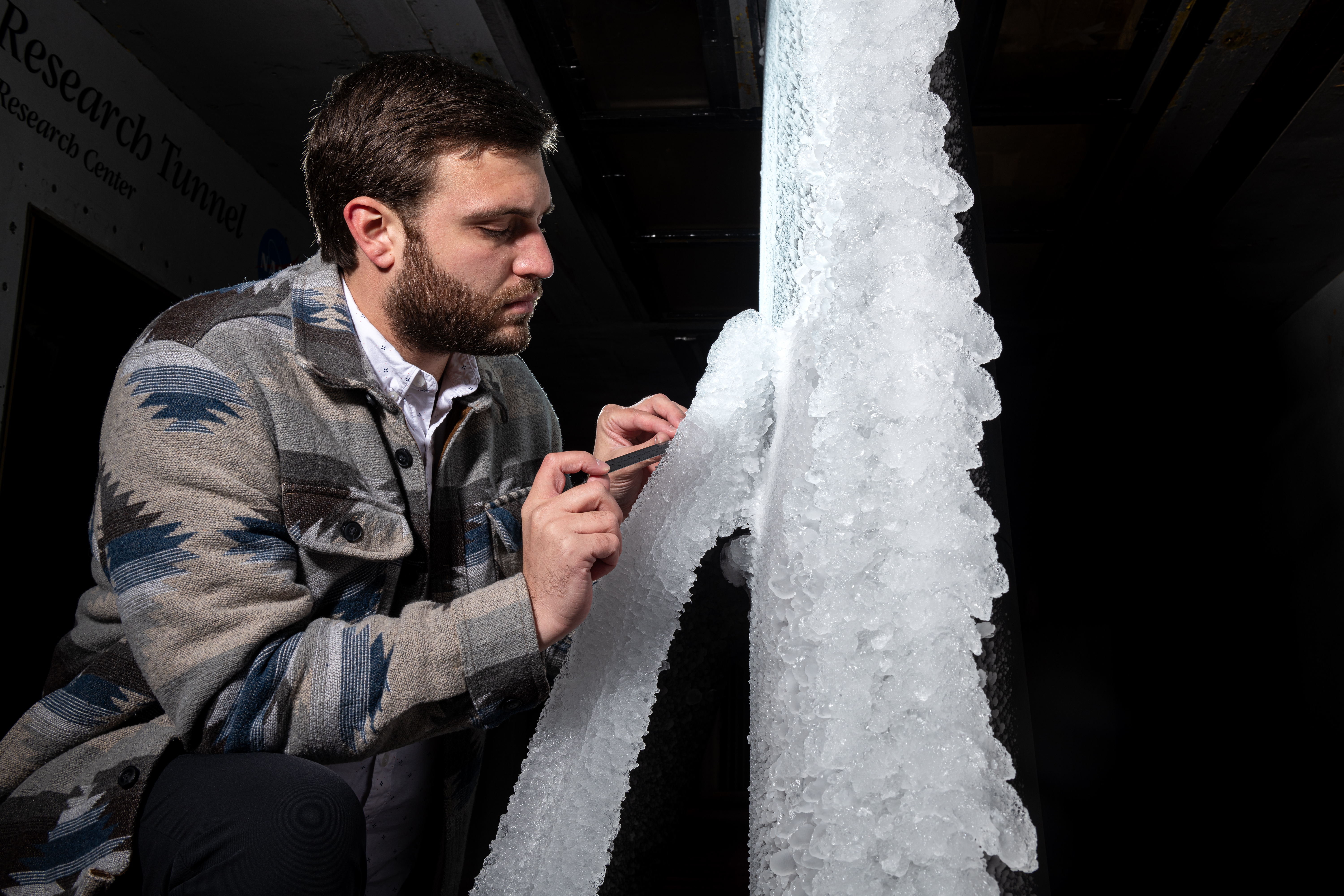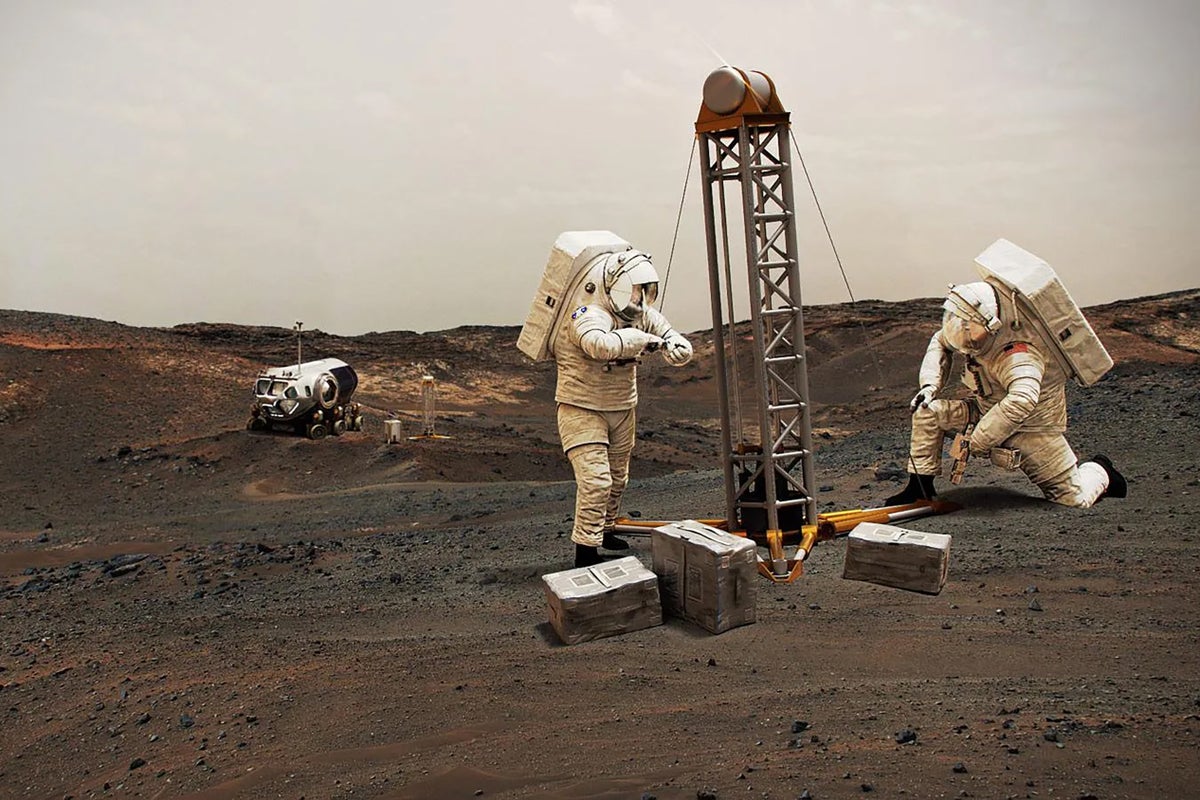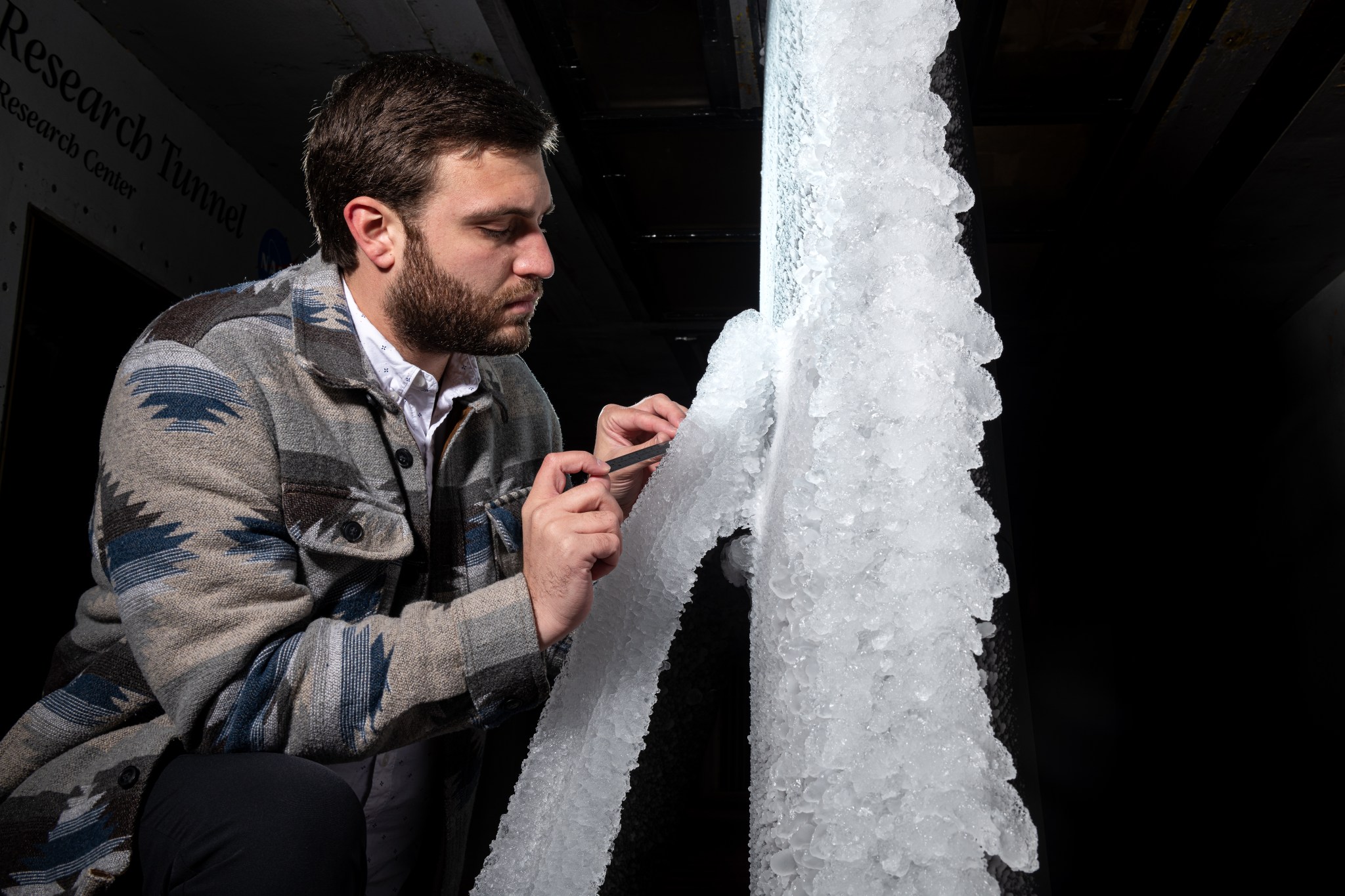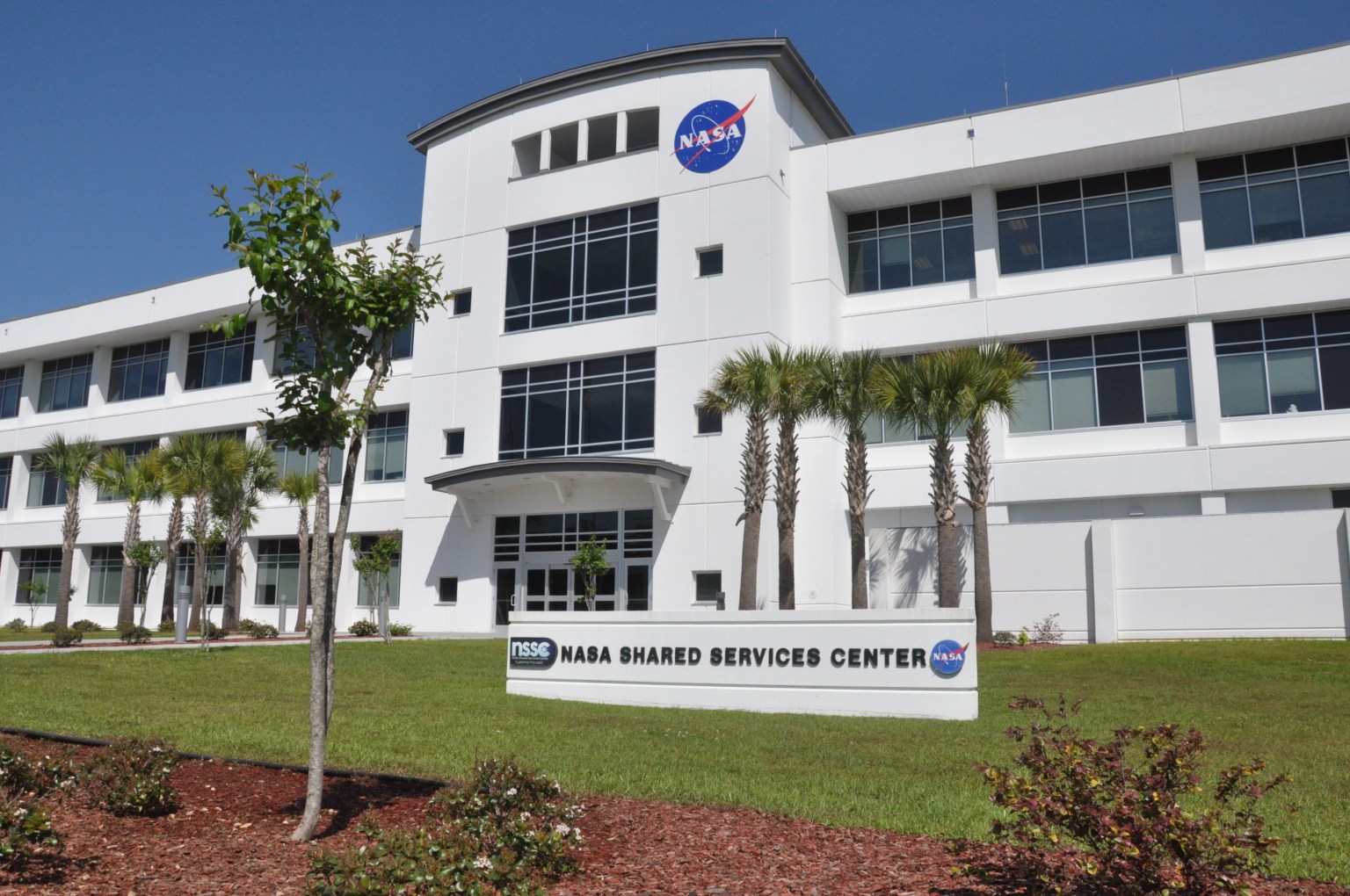Studying Ice for the Future of Flight
Thomas Ozoroski, a researcher at NASA’s Glenn Research Center in Cleveland, takes icing accretion measurements in October 2024 as part of transonic truss-braced wing concept research. In the future, aircraft with long, thin wings supported by aerodynamic braces could help airlines save on fuel costs – but those same wings could be susceptible to ice […]

Thomas Ozoroski, a researcher at NASA’s Glenn Research Center in Cleveland, takes icing accretion measurements in October 2024 as part of transonic truss-braced wing concept research.
In the future, aircraft with long, thin wings supported by aerodynamic braces could help airlines save on fuel costs – but those same wings could be susceptible to ice buildup. In the historic Icing Research Tunnel at NASA Glenn, scientists and engineers are testing a concept for a transonic truss-braced wing. Their goal: to collect important data to inform the design of these potential efficient aircraft of the future.
NASA Glenn can simulate icing conditions in its Icing Research Tunnel to identify potential challenges for new aircraft designs. These tests provide valuable information about how ice builds up on wings and can help identify the most critical icing conditions for safety.
Read more about icing testing at NASA Glenn.
Image credit: NASA/Jordan Cochran
What's Your Reaction?








































